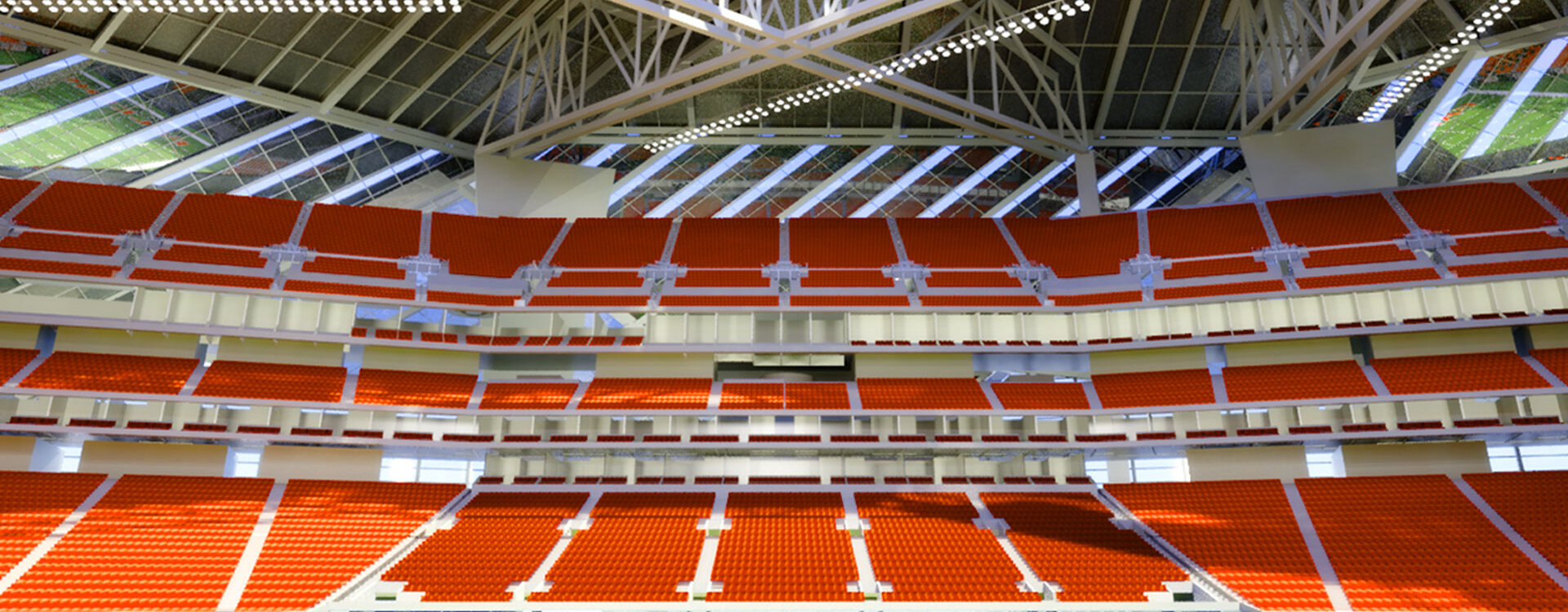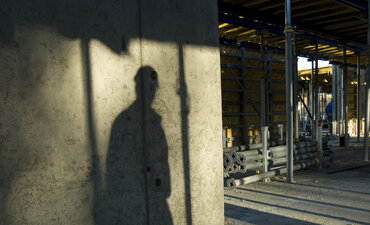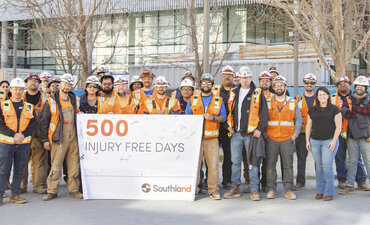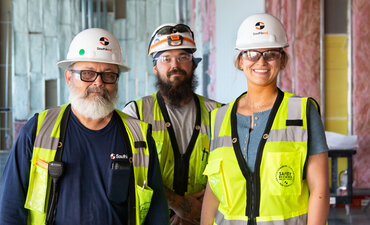
When it comes to stadium projects, no two are alike. Owners want a one-of-a-kind facility that provides an exceptional fan experience. Architectural features, design innovations, and unique building systems help create a space that accomplishes this, but also come with construction challenges and safety hazards. When safety challenges are presented on complex stadium projects, additional planning, training, and equipment is required to keep field personnel safe on the job. From dangerous heights to tight spaces and everything in between, we do what we can at Southland to overcome these safety hazards and enable our employees to return home safely each night.
The top six safety hazards we see on stadium projects are:
- Working at Dangerous Heights
When working on a stadium, several tasks and activities require personnel to work at dangerous heights. One of our stadium projects required employees to work at heights around 300 feet. To work at these heights, there is a safety redundancy that is not found in most conventional fall protection practices. All of our employees on stadium projects are required to have conventional fall protection training, however at heights like 300 feet, we need to know we have professionals who can conduct work with quality and safety. Southland's stadium project personnel encountering such heights must complete additional training and complete Society of Professional Rope Access Technicians certification. - Electrical Hazards
The hazards that accompany electrical work are common on most projects, but on a stadium with high voltage rooms in areas that are not always noticeable is another factor to consider. Working on exposed and live high voltage areas requires extensive additional training and personal protective gear, such as arc flash suits, to ensure the safety of the worker. Current guidelines such as the National Fire Protection Agency 70E codes must be used and strictly enforced to ensure the safety of all personnel. - Ergonomics
One factor most do not recognize is the hazard of performing tasks ergonomically. Although stadium projects are rather large and open, ergonomics are a glaring factor as employees have to work in tight areas and uncomfortable positions. To overcome this obstacle, Southland implemented a Stretch and Flex program. Each morning, our field teams perform a series of stretches to decrease the chances of an injury while working in tight spaces. - Struck-By and Caught-In or Between
With the high number of activities and personnel working on a single project, a good amount of equipment and machinery is being used on every floor at any given time. Unfortunately, this means field members being struck-by or caught-in or between machinery can be an issue. Despite limited space on the jobsite, we address this difficult task by using speed limits and spotters to ensure the safety of others while equipment is being moved. Nonetheless, even with procedures and protocols in place, accidents can still happen. - Working Overhead
Due to a strict schedule, separate teams are often assigned to work simultaneously in the same area, causing one team to work over another. This hazard occurs on several occasions, and has led us to recognize a need for work coordination. Our safety team is always conscious to step in and properly coordinate work to allow each trade to perform their tasks without hazard. - Coordination
A large project such as a stadium requires extensive coordination. Without pre-planning and coordinating schedules and tasks, several mistakes can be made along with incidents, accidents, and near-misses. To combat this issue, our safety team straightens out problems and streamlines the schedule to become functional and safe. Tools such as Pre-Task Plans, Job Hazard Analysis, and Committee Meetings are utilized to reduce the conflicts that can occur on a daily basis.
Mistakes are bound to happen, but it is our job to do everything we can to ensure a safe environment for each trade. Southland's safety and field teams continuously work together to avoid mistakes and accidents before they happen. Although there are plenty of challenges our field crews face every day, it's an exciting experience to work on iconic projects and gain the experience needed to make future projects safe.
Senior Safety Coordinator
As a Senior Safety Coordinator, Mr. Davis' main vision is to provide effective strategies through management commitment and employee ownership instilling safety into their daily lives.


